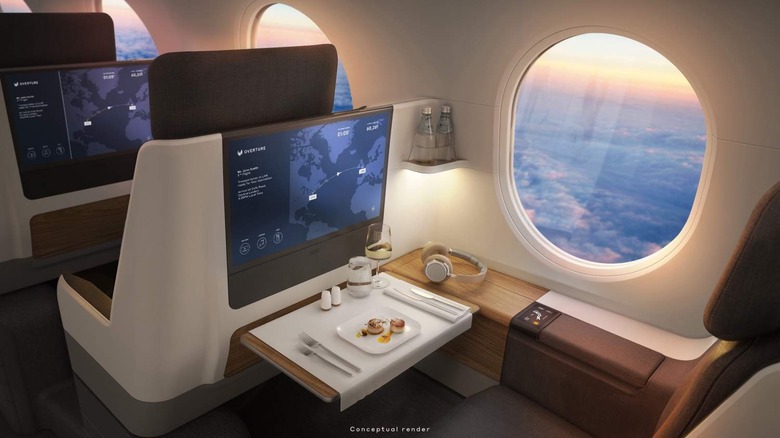United Orders Boom Supersonic Jets To Cut Long-Haul Travel Times In Half
United has ordered 15 supersonic aircraft, inking a deal with Boom Supersonic that will eventually see planes capable of twice the current speed of the current fleet enter intercontinental service. The deal for the Overture airliners – which will be capable of Mach 1.7 – could trim the trip from Newark to London to 3.5 hours, United suggests.
Newark to Frankfurt could take four hours, meanwhile, a trip which currently takes more than seven hours. San Francisco to Tokyo, United says, could be completed in six hours. Currently, that direct fight takes more than 11 hours.
Clearly, the advantages of supersonic flight are obvious in terms of travel efficiency. However as the demise of the Concorde project demonstrated, there are also significant challenges, not least cost of operations. Fuel and maintenance are considerable factors, as too was Concorde's cramped interior space.
Boom's Overture planes, in contrast, will deliver "ample personal space," United said today. There'll be room for in-seat entertainment screens and contactless technology, plus Boom plans for them to be net-zero carbon from day one. They'll run on 100-percent sustainable aviation fuel (SAF).
The initial fleet is scheduled to roll out in 2025, with the first flights in 2026. There won't be passenger flights, however, until 2029, and in the meantime "United and Boom will also work together to accelerate production of greater supplies of SAF," the airline says.
Assuming everything goes to plan – and there are clearly still plenty of moving parts to consider and pin down – United has an option to order a further 35 of the aircraft. That would take the total fleet to 50 units.

Before that can take place, Overture will need to satisfy the various safety, operating, and sustainability requirements for both United and regulators like the FAA. Boom demonstrated what it referred to as a "supersonic demonstrator" in late 2020, with the XB-1 being the first independently-developed supersonic jet. It's equipped with three General Electric J85-15 engines, together capable of 12,000 pounds of thrust.
Overture, meanwhile, is expected to carry 65 to 88 passengers, depending on interior configuration. It'll cruise at 60,000 feet, and has a range of 4,250 NM (or 4,888 miles). The cabin is set out with an entirely business class experience, with every seat having direct aisle access and sizable windows.
Of course, Boom isn't the only company working on restoring supersonic travel to the skies. As well as private projects, like Lockheed Martin's, there's also the ongoing X-59 project at NASA. While that doesn't intend to build a commercial supersonic jet of the space agency's own, it instead is focused on refining the technology so that other commercial projects could be made more feasible, as well as shaping new regulatory and environmental rules by which a new generation of supersonic aircraft could be judged.
That could end up being key, as one of the current limiting factors for supersonic flight is where, exactly, those aircrafts can operate. Concorde, for example, wasn't permitted to fly across the body of the US due to noise limits around the sonic boom its fastest speeds generated, and the impact that had on the states underneath. NASA hopes that new high-Mach jet engines could be developed that would reduce the noise audible on those living beneath the flight plan.
